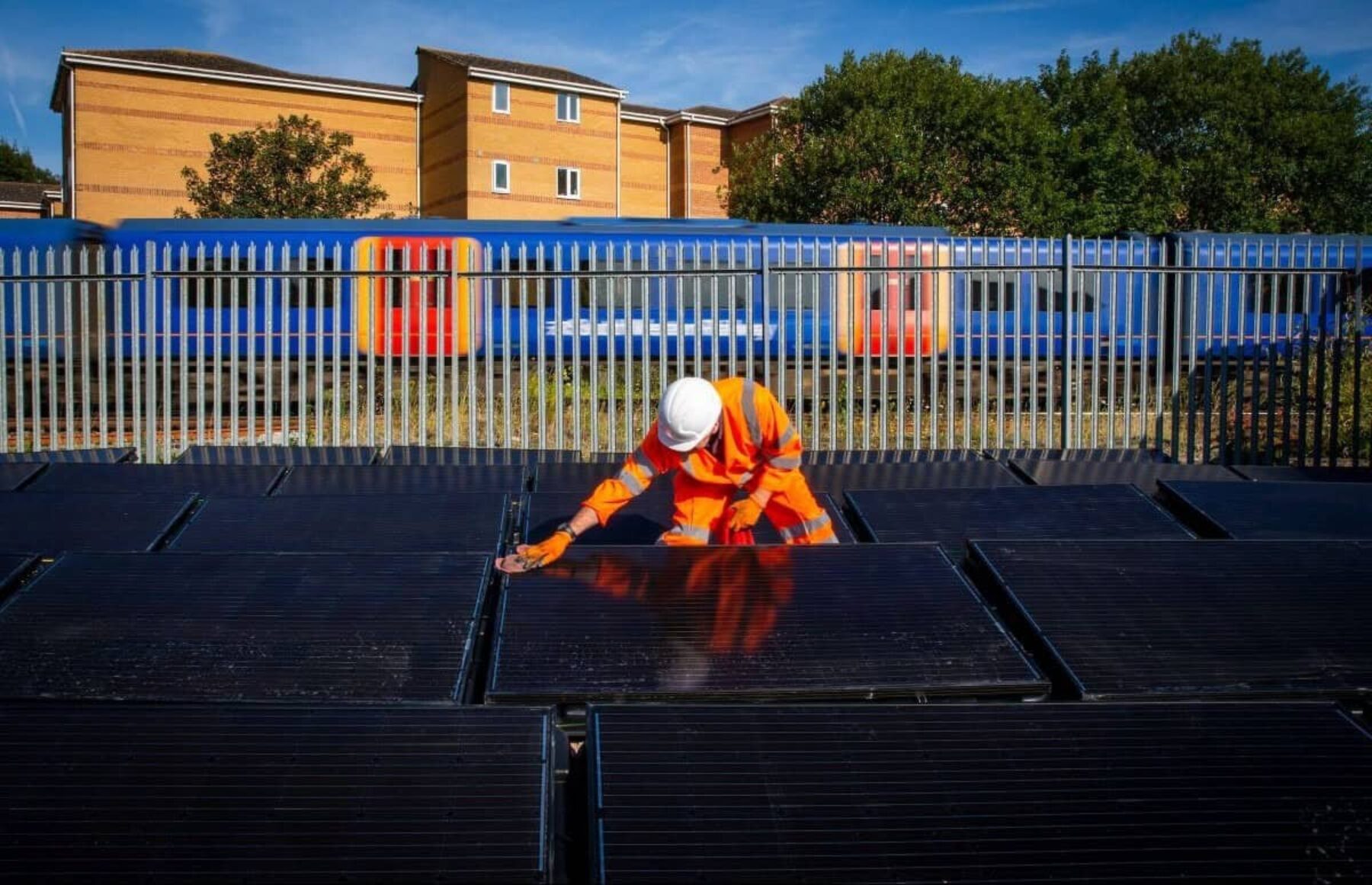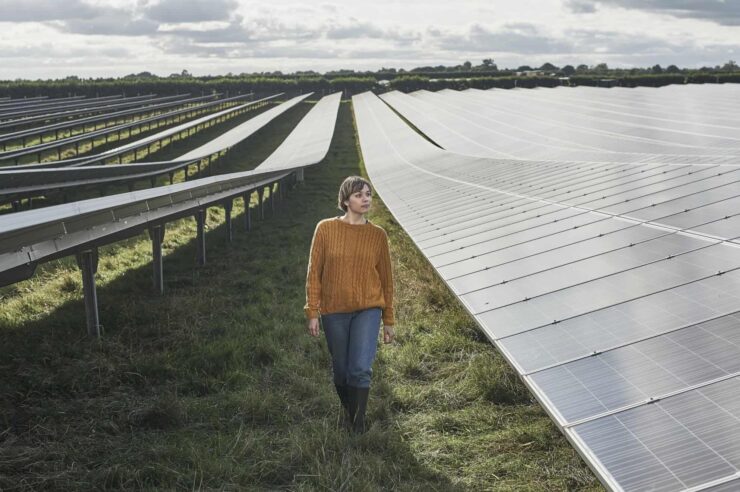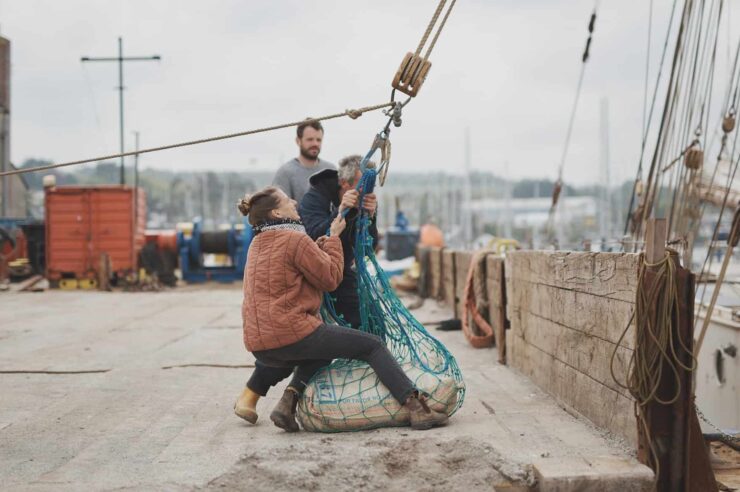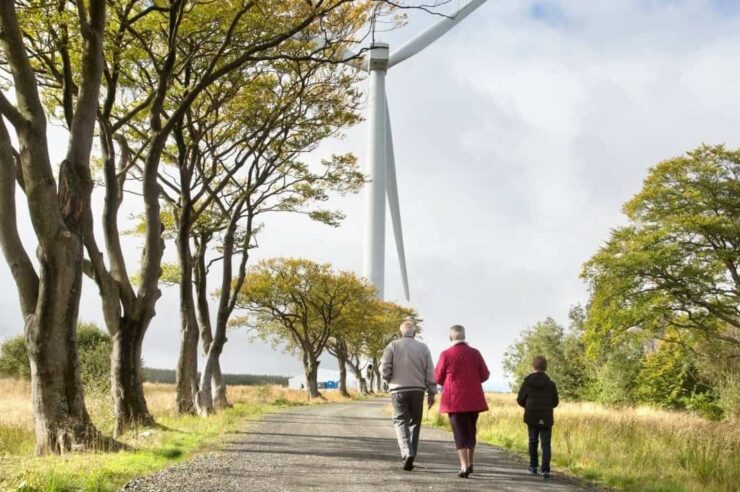A stretch of railway in Sussex will become the first in the UK to be powered by community generated solar energy. The scalable project could help decarbonise the network, while allowing communities to be part of the clean energy transition
Riding Sunbeams. The very name has a fairytale quality, and its aim of powering the UK’s vast, heavy-duty railway network by the light of the sun, could easily be mistaken for a fairy tale in itself.
But thanks to a mix of technical wizardry, sheer determination, and the backing of partners such as Thrive Renewables and the Friends Provident Foundation, Riding Sunbeams is anything but fantasy. After a successful pilot, it’s now poised for a wider roll-out, with community-owned energy companies at its core.
So how does it work?
Powering trains down the track uses a shedload of electricity – a demand set to increase as more of the rail network gets electrified. Meanwhile, there is a growing number of enthusiastic community solar projects, launched by people keen to encourage investment in generating green energy on their doorstep.
In order to be viable at a time when solar subsidies have been withdrawn, these projects mostly need to sell their power direct to a user through a private-wire connection. Suitable customers, that is, ones based nearby, who have a high demand for power, aren’t likely to go away and can therefore offer the prospect of predictable long-term demand, aren’t always easy to come by. As a result, many such schemes struggle to get off the ground.
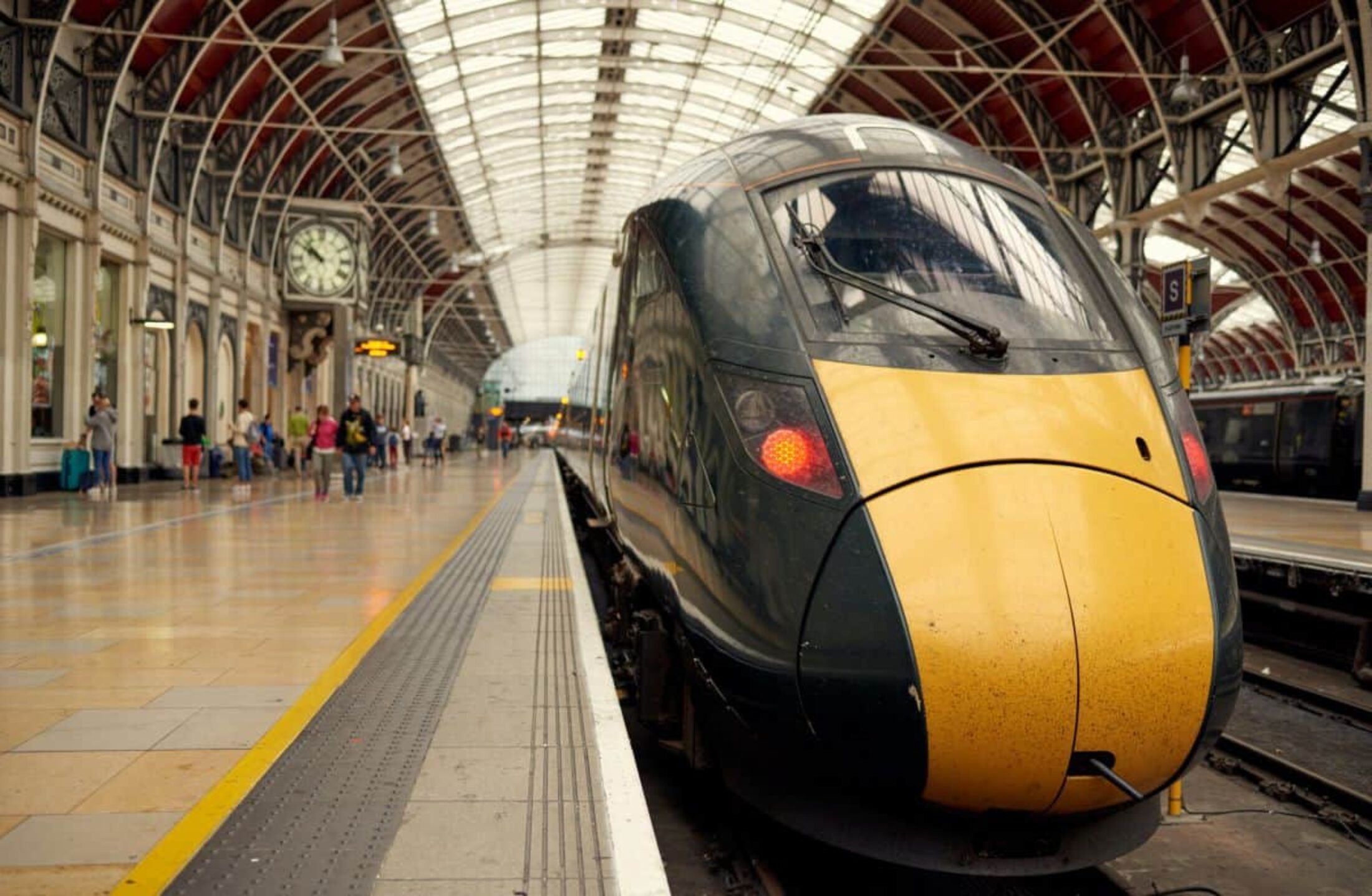
Railways use a shedload of electricity – a demand set to increase as more tracks are electrified. Image: JJ Jordan
Fortunately, though, some are well within range of the rail network. This fact brought a gleam to the eyes of climate change charity, Possible (formerly 10:10), and Community Energy South, an umbrella group for community groups in south-east England. They got together, did some serious technical research and, convinced the idea was a goer, with the help of energy experts from Imperial College and elsewhere, they combined to set up Riding Sunbeams.
Its aim: “To decarbonise rail traction networks through the development and connection of unsubsidised, direct-wire renewable generation with significant social impact for line-side communities.”
An ambitious mission, and one that’s easier said than delivered. First, Network Rail, which owns the tracks and has responsibility for electrical power, had to be brought on board. As Riding Sunbeams’ first CEO, Ivan Stone, puts it: “To connect our first live demonstrator site at Aldershot we built a highly collaborative relationship with Network Rail to demonstrate that we could meet the rightly stringent technical and safety standards necessary for them to even consider connection to their network.”
We were literally powering the trains over a section of the rail network. And that was a world first
But Stone had form on his side. He has a track record in delivering major infrastructure projects, including rail and air. “I tend to joke in the team that I’m the unreconstituted capitalist developer in the outfit”, he smiles.
Having someone with that solid corporate background on board, along with the technical experts that Stone and his team assembled, helped give Network Rail’s management confidence in the new company.
This was boosted by the results of the pilot project at Aldershot, where Riding Sunbeams built a solar farm on waste ground beside the tracks and proved to the satisfaction of railway engineers that they could indeed feed power into the rail’s grid smoothly and, crucially, safely too. “We were literally powering the trains over a section of the rail network. And that was a world first”, says Stone, proudly.
Powering up for success
The successful pilot opened up a whole array of possibilities. The railways are the UK’s largest single consumer of electricity. Anything that can help them reduce their need for grid power, save money, and at the same time help to meet their goals of decarbonising their energy use, is good news for Network Rail. And what works for them might work for other power users, too. So, Riding Sunbeams and its community energy partners clearly had a market. Now, they needed the wherewithal to exploit it.
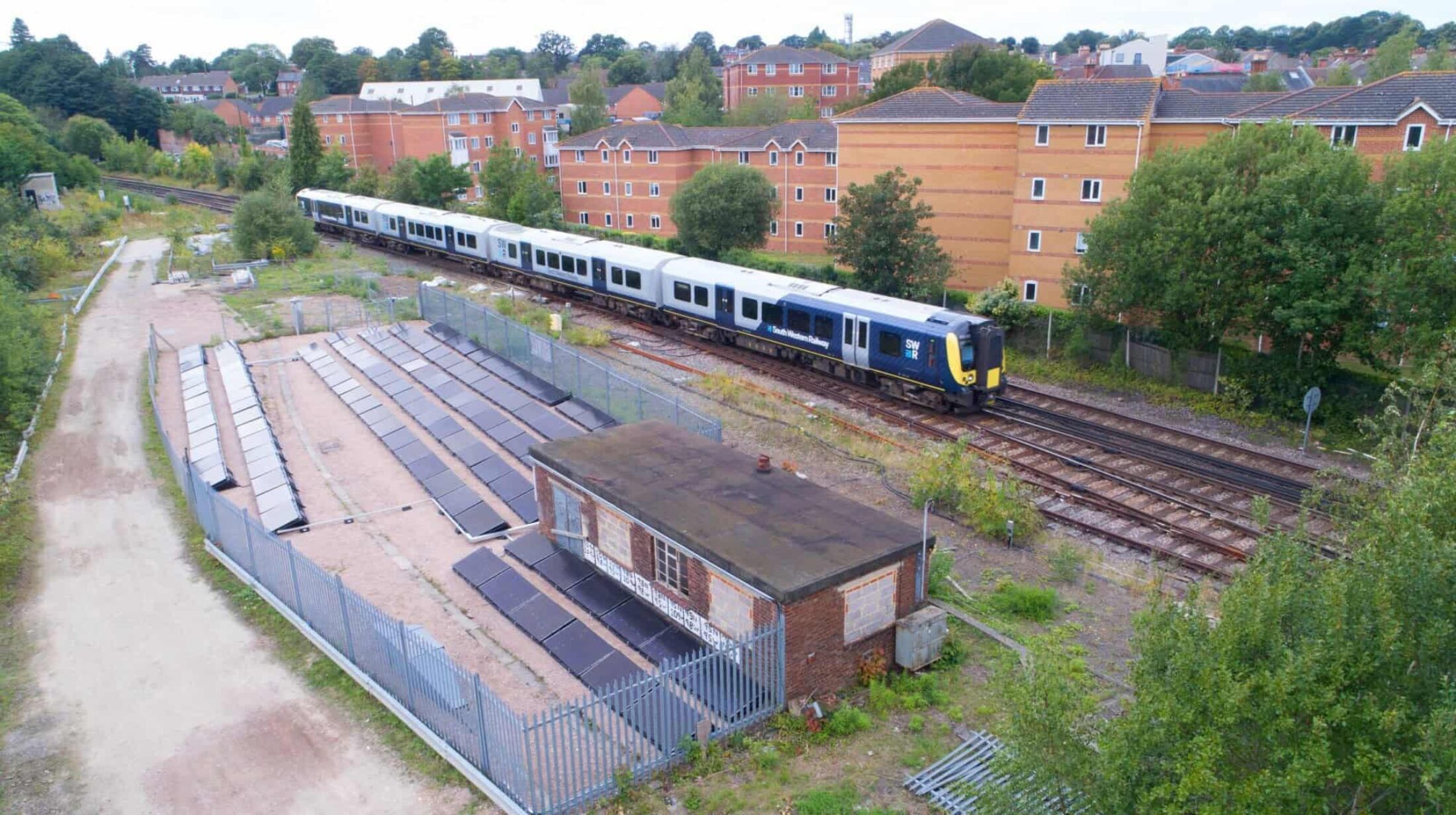
'We have the potential to power 10 per cent of the rail network,' says Stone. Image: Riding Sunbeams
This came courtesy of Thrive Renewables, which specialises in financing renewable energy projects. “Our strategy is twofold”, explains managing director Matthew Clayton. “We want to roll out more renewable capacity, to clean up the UK’s energy system. And we want to widen the ownership of renewables, to help more people participate directly in the transition to a zero-carbon economy.”
Riding Sunbeams ticked both boxes, and crucially, it had a sound business model behind it to do so. That appealed to fellow investor Friends Provident Foundation, too. They had initially supported the pilot scheme with a grant but have now followed up with a commercial investment.
As Colin Baines, the foundation’s investment engagement manager, says: “We knew it was a fabulous, innovative idea. But lots of people have those. The difference with Riding Sunbeams is that they’ve got the people who can make it a reality.”
A further shot in the arm has come from the UK Government’s Getting Building Fund, which has just announced £2.5m worth of investment.
But it isn’t just the solid, renewables-based business model that appealed to both Baines and Clayton. They were also won over by the company’s commitment that communities should be at the heart of the energy supply and should benefit from it. This commitment is, unusually for a commercial company, actually enshrined in Riding Sunbeams’ governing document.
Riding Sunbeams’ first community partner to benefit directly will be the Cuckmere Community Solar Company in East Sussex. It will feed electricity from its 3.75MW solar farm directly into the London to Eastbourne line. Its chair, Alister Scott, says that the “genius idea” of selling directly into the railway has made the solar farm viable for the first time.
We want to widen the ownership of renewables, to help more people participate in the transition to a zero-carbon economy
“This is just the start,” says Stone. He conjures up a vision of “dozens of local community solar farms, generating hundreds of megawatts”, and adds: “We have the potential to power 10 per cent of the rail network.” It could go beyond solar, too; the company is already looking at powering trains in Wales through a mixture of community-owned solar, wind and battery plants.
It’s a vision that Scott and his fellow pioneers in Sussex are excited to be a part of. “The sheer complexities and scary scale of the climate emergency can easily sink people into despondence”, he says, “but projects like ours can literally give people ownership of one of the solutions, as shareholders, buying into a clean local power station that recycles all profits into helping the community.
“We are incredibly privileged to be the first project to try out this idea.”
Main image: Riding Sunbeams
